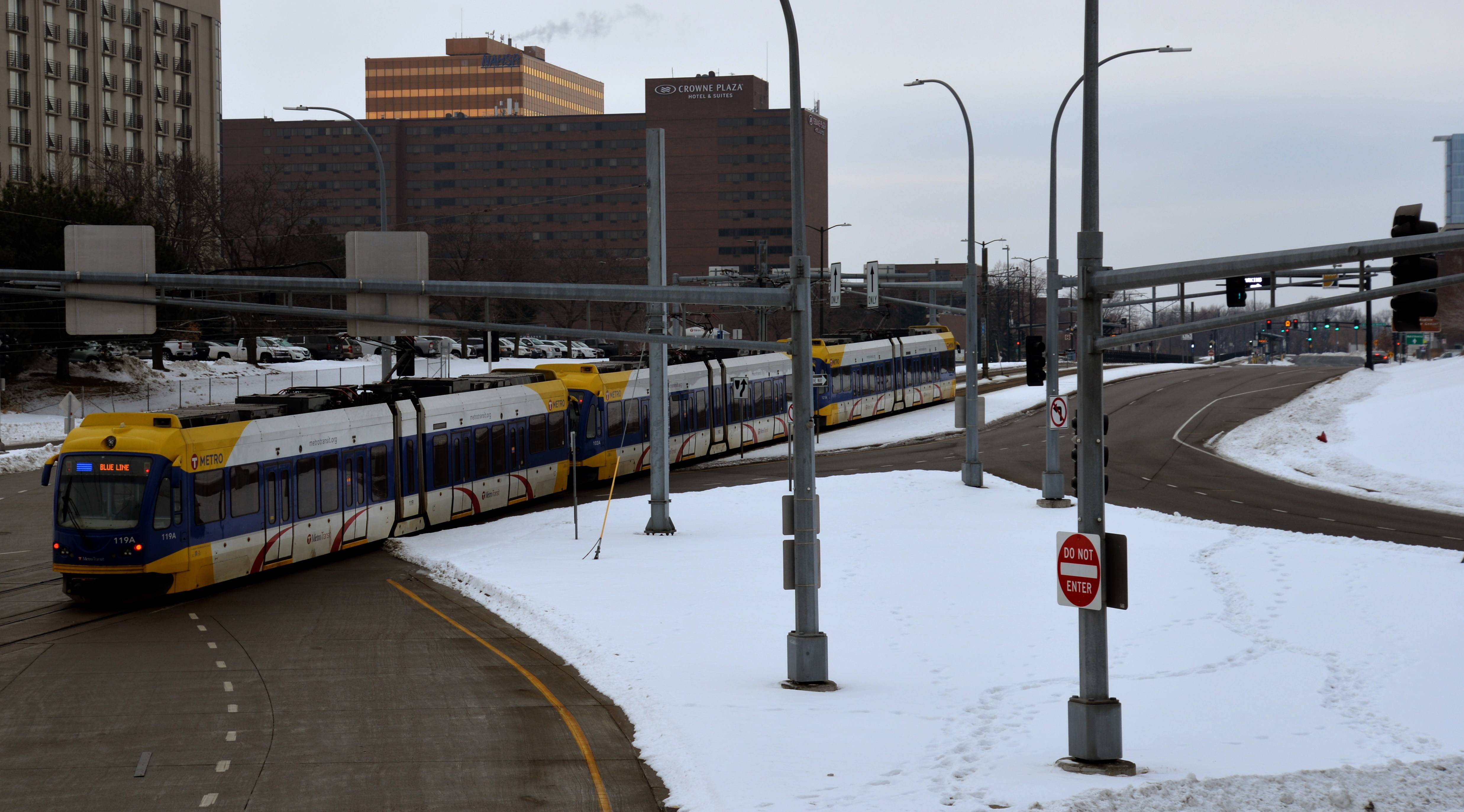
Travel times on the METRO Blue Line are becoming increasingly reliable.
The most recent reliability improvements are the result of work done on the south end of the 12-mile light rail line, between the Minneapolis-St. Paul International Airport and the Mall of America.
Average travel times between the American Boulevard and Terminal 2-Humphrey stations have been reduced by about 15 seconds in both directions while also becoming more consistent.
The improvements have largely been achieved through a three-year effort to replace some of the original signal equipment installed when the Blue Line was built 20 years ago.
Newly installed traffic signal equipment can better communicate with city traffic signals and more accurately detect train movements, giving trains a better chance of moving through intersections without having to stop.
The City of Bloomington also implemented a new traffic management system that allows city staff to more easily monitor and respond to signal issues.
The work was completed as part of a partnership between Metro Transit, the City of Bloomington, the Metropolitan Airports Commission and engineering consultants at Kimley-Horn.
The advances in Bloomington build on similar improvements in downtown Minneapolis, where updated signal technology was installed as part of a larger track and signal project that began in 2017.
In 2020, Blue Line trains arrived at their final stop within five minutes of their scheduled arrival more than 90% of the time, the best performance in years. In nearly all cases, trains arrived at stations at their scheduled frequency, minimizing wait times.
Efforts to continue improving the speed and reliability of light rail trains on the Blue Line and Green Line are ongoing. To help, Metro Transit is working closely with municipal partners and collecting an increasing amount of data to pinpoint where delays occur.
Reliability improvements also reflect work to minimize delays caused by light rail vehicle failures and unexpected events, like a vehicle getting stuck on a track.